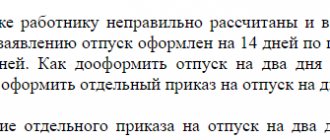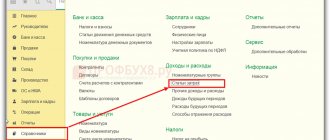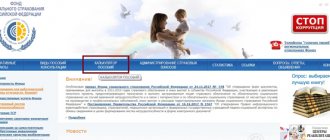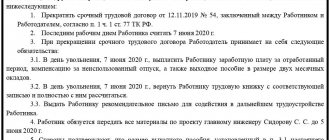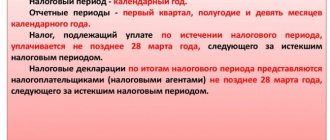A little about the essence of VAT and deductions
Value added tax is included in the price of goods, works or services sold by the VAT payer. It is paid from the buyer’s pocket, but is part of the proceeds, so the seller must transfer it to the budget.
There is also VAT as part of the cost of goods that an individual entrepreneur purchases for his activities. At the same time, the law gives him the right to deduct this tax, that is, to reduce the amount of VAT payable to the budget by its amount. The deduction is provided only to those entities who pay VAT themselves - it is a mechanism for getting rid of double taxation.
To implement the deduction, an individual entrepreneur must keep tax records . All transactions must be accompanied by the preparation of invoices , and must also be reflected in the books of purchases and sales, the journal of issued and received invoices.
If the individual entrepreneur does not have an invoice issued by the seller, then he will not be able to deduct the tax presented as part of the price of the goods.
Basic information about VAT and its deduction:
Definition of “advance payment”
Based on Article 487 of the Civil Code of the Russian Federation, an advance payment means payment to the supplier of one hundred percent or partial cost of the purchased product (paid service) before the client receives this product or service in full. The main purpose of the advance payment under the contract is to guarantee the fulfillment of the agreement between the buyer and the seller according to the fixed deadlines, quality of execution and completeness of delivery of goods or performance of work.
According to article one hundred forty-six of the Tax Code of the Russian Federation, the object of taxation for value added tax (VA tax) is recognized as various transactions for the sale of goods, performance of work or provision of services within the borders of the Russian Federation. Based on this , organizations that have received an advance payment (prepayment) to ensure the fulfillment of contractual obligations must calculate and pay VAT on the received amount.
Some types of advance payments are not subject to value added tax:
1. if the payment was made to guarantee the execution of contracts for transactions not subject to VAT:
- for export operations, international transport and other activities taxed at a zero rate, in accordance with the one hundred and sixty-fourth article of the Tax Code of the Russian Federation;
- for operations that are completely exempt from the specified tax (services in the field of insurance, medicine, education, etc., listed in the one hundred and forty-ninth article of the Tax Code of the Russian Federation);
- for activities in the field of selling products and performing work abroad of the Russian Federation (these operations are referred to in the one hundred forty-seventh and one hundred and forty-eighth articles of the Tax Code of the Russian Federation);
2. if the advance payment was transferred to guarantee the supply of products or the performance of work, the production cycle of which will exceed six months (the list of such goods and services is specified in the Decree of the Government of the Russian Federation number four hundred sixty-eight dated July 28, 2006).
Calculation of VAT amount
Individual entrepreneurs calculate tax at the same rates as organizations. By default it is 18% , although for some product groups a rate of 10% . If the activity is related to the export of goods and services, it is subject to VAT at a rate of 0% .
It is important to understand the difference between a 0% rate and no VAT on transactions. In the first case, the entrepreneur must confirm the preferential rate with a certain set of documents. If this is not done, you will have to pay VAT at a rate of 18%.
To calculate the tax payable, the entrepreneur determines the tax base - this is the cost of all transactions, including advances, subject to VAT. The corresponding rate is applied to it - 10 or 18%. Also, an individual entrepreneur has the right to claim a tax deduction and reduce the calculated tax by its amount. What you end up with will be the amount of VAT that must be paid to the budget in the reporting period.
What is the VAT tax burden used for?
The concept of “Tax burden for VAT” is mentioned in the letter of the Federal Tax Service of Russia “On the work of the commission for the legalization of the tax base and the base for insurance premiums” dated July 25, 2017 No. ED-4-15 / [email protected] , which regulates the work procedure of the relevant commissions conducting In the course of this work, an analysis of the dynamics of those indicators of the economic activity of taxpayers, on which the level of their tax burden depends. Formulas for calculating the tax burden, similar to those contained in letter No. AS-4-2/12722, are also given here (in Appendix 7). In comparison with letter No. AS-4-2/12722, provisions have been added to letter No. ED-4-15/ [email protected] regarding the analysis of data received in connection with reporting on insurance premiums submitted to the Federal Tax Service from 2021.
So, with regard to VAT, the letter discusses 2 calculation indicators:
- the share of deductions in the tax calculated from the taxable base. Let us remind you that the Federal Tax Service publishes quarterly on its website indicators for calculating the safe share of deductions by region;
The article “What is the safe percentage of VAT deductions in your region in 2019-2020?” will help you assess the safe share of deductions for your company.
- tax burden for VAT, which is the ratio of the tax accrued for payment according to the declaration to the tax base.
Appendix 4 to this document provides algorithms for calculating both indicators.
The indicator of the tax burden for VAT, along with the indicator of the share of deductions in the tax calculated from the taxable base, is one of the main criteria for selecting candidates for an in-depth audit of their reporting documents, accounting data, providing additional explanations and for calling the taxpayer to a commission of the tax authority on legalization of the tax base.
The criteria for classifying VAT tax burden indicators as a “low tax burden” are not specified in the document. By analogy with the figures given for income tax, the following indicators can be considered a low tax burden for VAT: less than 3% for manufacturers of products (goods, works, services) and less than 1% for trade organizations.
See also: “Calculation of the tax burden in 2019-2020 (formula).”
VAT on advance payments
A special procedure exists for paying VAT on advances received . This obligation is imposed on tax payers in accordance with paragraph 1 of Article 167 of the Tax Code of the Russian Federation. The difference is that in this case you need to apply the estimated VAT rate :
- 10/110 - in relation to goods and services taxed at a rate of 10%;
- 18/110 - in relation to goods and services with a rate of 18%.
The tax base in this case is the amount of the advance received against future supplies.
When receiving an advance, as with a regular sale, the entrepreneur who pays the simplified tax system must issue an invoice . This must be done within 5 days after receiving the money in your bank account.
When the delivery takes place, VAT on the advance payment is deducted, and tax is charged on the entire sales amount. If the advance is returned, that is, the transaction does not take place, the amount of VAT will be deducted.
In connection with advances, one more situation needs to be mentioned. It happens that at the end of the year an entrepreneur received advances from buyers against future deliveries, and from the beginning of the next year he switched to the simplified tax system . The prepayment was received while the individual entrepreneur was a VAT payer; accordingly, he charged tax on it. After that, he switched to a regime that does not involve paying VAT and completed the transaction (sold the goods for which an advance was received). In this case, he will no longer be able to deduct the VAT paid on the advance payment. But he also should not charge sales tax.
Nevertheless, it is recommended to avoid such situations, that is, if you want to switch to a tax regime without VAT from next year, return advances received from them to buyers in advance.
Negative values on invoice
Is it legal to issue a “negative” invoice? Can the seller issue such an invoice and the buyer accept negative VAT?
Content
The need to adjust previously issued invoices to reduce tax may arise in several cases. For example, when returning a product, when providing a discount on a shipped product, when a tax is erroneously allocated in an invoice, or when a negative amount difference occurs.
Regulatory framework
The Tax Code of the Russian Federation does not provide for the possibility of issuing “negative” invoices. Not a word is said about them in the Rules for maintaining logs of received and issued invoices, purchase books and sales books when calculating value added tax, approved by Decree of the Government of the Russian Federation of December 2, 2000 N 914.
However, there is also no direct ban on issuing such invoices.
Opinions of judges, the Ministry of Finance and tax authorities
There are different views on the problem of “negative” invoices.
Issuing “negative” invoices is unacceptable:
- Letter of the Ministry of Finance of Russia dated March 21, 2006 No. 03-04-09/5,
- dated May 29, 2007 No. 03-07-09/9.
It is allowed to issue a “negative” invoice:
- Resolution of the Federal Antimonopoly Service of the Moscow District dated September 11, 2008 No. KA-A41/8495-08-P,
- Federal Antimonopoly Service of the West Siberian District dated 02/07/2007 No. F04-9404/2006(30453-A45-26),
- FAS Moscow District dated June 25, 2008 No. KA-A40/5284-08.
Given this, the possibility of reducing the tax base by issuing a “negative” invoice will probably have to be proven in court.
What to do with “negative” VAT?
VAT on negative amount differences can be posted with negative entries in the Sales Books and Purchase Books based on the adjusted VAT amounts in the period when the negative amount difference arose.
In other cases of adjustments to the initially accrued VAT, the accountant will need to make corrections during the periods of the business transaction with the submission of an updated VAT return. For example, in the event of an erroneous allocation of tax, such an obligation arises on the basis of paragraph 1 of Article 81 of the Tax Code of the Russian Federation.
Discount
When providing a discount, the moment of presentation of VAT is controversial and depends on the understanding of the term “discount” and on the terms of the agreement under the Civil Code. After all, the current legislation on taxes and fees does not define the concept of “discount”.
The tax authority may regard the discount as a gratuitous transfer on the basis of Art. 572, 574 Tax Code of the Russian Federation. Taxpayers have successfully disputed this opinion.
The Russian Ministry of Finance interprets a discount as a change in the price of previously supplied goods with the need for adjustments to previous deliveries.
In contrast to them, the FAS Moscow District, in Resolution No. KA-A41/8495-08-P dated September 11, 2008, concludes that the discount is a separate business transaction that does not coincide in time with the time of delivery of the goods. And that the primary documents must be completed during the discount period.
What to do?
To reduce tax risks, we recommend that instead of issuing “negative” invoices, you make changes to already issued invoices. At the same time, in all cases of making changes to previously issued invoices, except for taking into account negative amount differences, it will be less risky to make changes to the Purchase Book and Sales Book in previous periods with the submission of updated VAT returns for the corresponding periods.
Legal documents
- 02.12.2000 N 914
- Letter of the Ministry of Finance of Russia dated March 21, 2006 No. 03-04-09/5
- dated 05/29/2007 No. 03-07-09/9
- <Information> FAS RF from 05/20/2010
- Decision of the Supreme Court of the Russian Federation dated February 27, 2004 N VKPI04-8
- <Letter> Federal Tax Service of the Russian Federation dated 02/10/2010 N ШС-17-3/ [email protected]
- Article 81 of the Tax Code of the Russian Federation
- Art. 572
- 574 Tax Code of the Russian Federation
- Decision of the Supreme Court of the Russian Federation dated February 27, 2004 N VKPI04-8
- Order of the Ministry of Health and Social Development of the Russian Federation dated June 13, 2006 N 464
- <Information> FAS RF from 05/20/2010
If the individual entrepreneur is a tax agent for VAT
We mentioned above that sometimes even without being a VAT payer, an entrepreneur is obliged to pay it. In particular, when he plays the role of a tax agent. Most often this happens in the following cases:
- When an individual entrepreneur purchases goods, work or services from a foreign person who is not registered with the Russian tax authorities.
- When an entrepreneur carries out intermediary activities on behalf of a foreign organization and participates in settlements.
- When the object of the transaction is state or municipal property , that is, when an entrepreneur buys or rents it.
In this case, despite the fact that the entrepreneur does not pay his own VAT, he is obliged to keep VAT records, accrue and pay taxes to the budget, and also submit reports in a timely manner.
About VAT tax agents:
VAT for an entrepreneur using “simplified”
Taxpayers under the simplified tax system are exempt from paying VAT. But sometimes, due to ignorance or by meeting the counterparty halfway, such entities can issue invoices and allocate the amount of tax in them. In this case, the tax will be payable even though the individual entrepreneur is not the payer.
In addition, there are other cases when an individual entrepreneur using the simplified tax system is required to pay VAT:
- If he works under a commission agreement , guarantee or other intermediary agreement.
- If he entered into a simple partnership , entered into a trust management agreement.
Moreover, the mentioned legal relations arise only if the entrepreneur, as an object of taxation under the simplified tax system, uses income reduced by the amount of expenses.
An individual entrepreneur using the simplified tax system who pays VAT in connection with agency activities is not considered a payer of this tax. Nevertheless, he is obliged to take into account incoming and outgoing invoices, as well as submit reports to the Federal Tax Service. However, he does not receive the right to deduct input tax.
Reporting
Starting from 2015, you can submit your VAT return exclusively in electronic form . This applies to both organizations and individual entrepreneurs. You can submit a declaration through the program for interaction with the Federal Tax Service. A report for each quarter is submitted no later than the 25th of the following month.
You should not neglect this responsibility, since the Tax Code provides for fines for this. Moreover, if the declaration is not received by the tax authority within 10 days after the deadline, the entrepreneur’s account may be blocked.
About penalties for failure to submit a declaration:
For whom the VAT amount has not changed
Contrary to popular belief, VAT is one of the main taxes, albeit indirect, since thanks to it colossal funds flow into the budget - at least 35% of the total amount of money in the treasury. This is very convenient, because value added tax is paid by all customers, even those who do not work, and this happens, for example, every time they go to the store. As a general rule, VAT taxpayers must pay the calculated tax at the end of the tax period in 3 equal payments: no later than the 25th day of each of the 3 months following this period (clause 1 of Article 174 of the Tax Code of the Russian Federation). And the tax period for VAT is a quarter (Article 163 of the Tax Code of the Russian Federation). If the deadline for paying VAT falls on a weekend or a non-working holiday, then the last day on which you can still pay VAT is the next working day (Clause 7, Article 6.1 of the Tax Code of the Russian Federation).
In accordance with amendments to the legislation of the Russian Federation, which are relevant in 2021, some categories of intermediaries are not tax agents for VAT. Upon receipt of partial payment (advance payment) for the upcoming delivery of goods subject to VAT, the seller is obliged to calculate the amount of tax (clause 2, clause 1, article 167 of the Tax Code of the Russian Federation).
Current as of: January 23, 2021 VAT payers, as well as tax agents for this tax (with some exceptions) pay VAT, as a general rule, monthly in the amount of 1/3 of the tax amount payable to the budget at the end of the reporting quarter.
The amount of tax payable to the budget is determined at the estimated rate. Her choice is determined by the VAT rate that the company intends to apply when selling goods for which an advance was received. The taxpayer currently applies a rate of 18/118 or 10/110 (clause 4 of article 164 of the Tax Code of the Russian Federation).
Quarterly payments are transferred to the budget by the 28th day of the month following the reporting period. Important: if an enterprise is included in this list, it has the right to refuse monthly transfers directly from the 1st quarter of 2021. The corresponding application to the tax office must be submitted by December 31 of the previous year.
VAT payable for the 3rd quarter of 2021 – RUB 185,260. When dividing the amount by three, the result is 61,753.33 rubles. (RUB 185,260 / 3).
VAT does not have any complicated definition - it is simply a part of the cost of goods or services that is automatically paid to the budget when these goods or services are sold. In 2021, the seller received an advance payment of 120 rubles. I calculated VAT on it - 18.31 rubles. (120*18/118). In 2021, goods worth 120 rubles will be shipped, incl. 20% VAT - 20 rub. The seller will charge VAT 20 rubles. on the date of shipment of goods and will deduct VAT calculated upon receipt of prepayment - 18.31 rubles. (120*18/118) from the advance payment amount counted towards payment for goods.
If the 15th falls on a non-working day, then the end date is considered to be the nearest working day. Deadlines for payment of contributions to the funds in the 1st quarter of 2021. and for the 1st quarter of 2021 the following. No later than: January 15 (for December), February 15 (for January), March 15 (for February), April 15 (for March). The Tax Code of the Russian Federation establishes deadlines for filing tax reports (declarations, advance payments), as well as deadlines for paying taxes for each tax. Organizations and entrepreneurs using the simplified tax system must pay an advance tax payment no later than April 25, 2021.
Such costs include, for example, office rent or utility bills. In this case, the amount of “input” VAT should be distributed in proportion to how these goods (services) are used in each type of activity. Entrepreneurs using the simplified tax system are exempt from paying a number of taxes: in particular, organizations do not pay profit tax and VAT, and individual entrepreneurs do not pay personal income tax and property tax.

